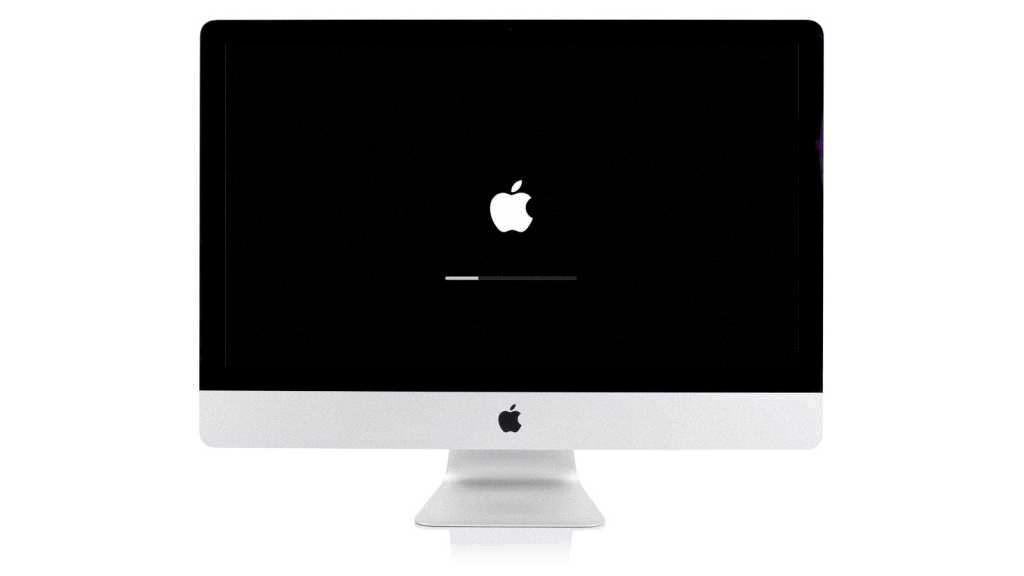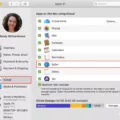Safe Boot, also known as Safe Mode, is a troubleshooting feature on Mac computers that allows users to start their devices in a basic state with minimal software and services enabled. This mode is primarily used to diagnose and fix various issues that may be affecting the normal operation of the Mac.
When you boot your Mac into Safe Mode, it disables unnecessary services and performs a series of checks to ensure that only essential system software is loaded. This can be helpful in identifying and resolving problems such as freezing, crashing, or slow performance that may be caused by incompatible software, corrupted files, or other issues.
To enter Safe Mode on a Mac, you need to restart your computer and then press and hold the Shift key immediately after hearing the startup chime. Keep holding the Shift key until you see the Apple logo and a progress bar. This indicates that your Mac is starting up in Safe Mode. Once Safe Mode is enabled, you can release the Shift key.
In Safe Mode, your Mac will appear slightly different than in normal mode. The desktop may have a lower resolution, and certain features may be unavailable or disabled. This is because Safe Mode only loads the most essential system software and drivers, leaving out unnecessary components.
One of the main benefits of Safe Mode is that it allows you to troubleshoot issues related to software conflicts. By starting up with minimal software and services, it becomes easier to identify if a particular application or driver is causing problems. If your Mac functions properly in Safe Mode, it suggests that the issue is likely caused by software installed on your system.
Safe Mode also provides a level of protection against potential malware. By disabling non-essential services and startup items, it reduces the possibility of malicious software interfering with your Mac’s normal operation. This can be particularly useful if you suspect that your Mac may be infected or if you are experiencing unusual behavior.
To exit Safe Mode, simply restart your Mac normally without pressing any keys. This will bring your Mac back to its regular state, with all software and services enabled.
It is important to note that Safe Mode is not a permanent solution for fixing issues on your Mac. While it can help diagnose problems, it does not provide a comprehensive solution. If you encounter recurring or severe issues, it is recommended to seek further assistance from Apple Support or a qualified technician.
Safe Boot or Safe Mode on Mac is a useful troubleshooting feature that allows users to start their computers with minimal software and services enabled. It helps identify software conflicts, resolves certain issues, and provides protection against potential malware. However, it is important to remember that Safe Mode is not a permanent fix and further assistance may be required to address more complex problems.
What Do You Do When Your Mac Says Safe Boot?
When your Mac says “Safe Boot,” it means that your computer is starting up in safe mode. Safe mode is a troubleshooting mode that allows you to isolate and fix certain issues you may be experiencing with your Mac. It disables unnecessary services and loads only essential system components.
If your Mac is in safe mode, you may notice some differences in its behavior. For example, the desktop background may change to a gray color, and you may see “Safe Boot” displayed in the login window. Additionally, some features and functions may be limited or unavailable in safe mode.
To address the issue causing your Mac to enter safe mode, you can follow these steps:
1. Restart your Mac: To exit safe mode, simply restart your Mac normally without pressing any keys. You can do this by selecting “Restart” from the Apple menu in the top-left corner of the screen.
2. Identify the underlying problem: If your Mac consistently boots into safe mode or you frequently encounter issues that trigger safe mode, it’s important to identify and resolve the underlying problem. Common reasons for a Mac to boot into safe mode include software conflicts, incompatible startup items, disk issues, or faulty hardware.
3. Update software and drivers: Ensure that your Mac is running the latest version of macOS and that all software and drivers are up to date. Outdated or incompatible software can sometimes cause issues that lead to safe mode.
4. Remove incompatible login items: In safe mode, your Mac only loads essential system components, which means that incompatible login items (applications or services that launch at startup) are disabled. To troubleshoot login items causing the problem, navigate to “System Preferences” > “Users & Groups” > “Login Items.” Remove any unnecessary or problematic items by selecting them and clicking the “-” button.
5. Check for disk errors: Disk issues can also trigger safe mode. To check for disk errors and repair them, reboot your Mac and hold down the Command (⌘) and R keys simultaneously to enter macOS Recovery. From there, select “Disk Utility” and run First Aid on your startup disk.
6. Disconnect peripherals: Sometimes, external devices or peripherals can interfere with the normal boot process. Disconnect any external devices such as printers, scanners, or external hard drives, and then restart your Mac.
If the issue persists after following these steps, it may be necessary to seek further assistance from Apple Support or a qualified technician who can diagnose and resolve the problem.
Remember, safe mode is a useful troubleshooting tool, but it’s not intended for regular use. Once you have resolved the underlying issue, your Mac should start up normally without entering safe mode.

How Do You Get Out Of Safe Boot Mode?
To exit Safe Boot mode on your Mac, you can follow these steps:
1. Click on the Apple menu located in the top-left corner of your screen.
2. From the drop-down menu, select the “Shut Down” option.
3. Allow your Mac to complete the shutdown process. It is important not to interrupt this process or forcefully turn off your Mac by holding down the power button.
4. Once your Mac has shut down completely, press the power button to turn it back on.
5. As your Mac starts up, hold down the Shift key immediately after pressing the power button.
6. Keep holding the Shift key until you see the Apple logo or a progress bar on the screen. This indicates that your Mac is starting up in Safe Boot mode.
7. After a while, your Mac will finish starting up in Safe Boot mode. You can now proceed to perform any necessary troubleshooting or maintenance tasks.
8. To exit Safe Boot mode, simply restart your Mac. Again, click on the Apple menu and choose the “Shut Down” option. Then press the power button to turn it back on.
9. Allow your Mac to start up normally without holding down any keys.
10. Congratulations, you have successfully exited Safe Boot mode on your Mac!
Remember, Safe Boot mode is a diagnostic mode that helps you troubleshoot issues with your Mac by starting up with a minimal set of software and drivers. Exiting Safe Boot mode allows your Mac to start up with all the normal features and functionality restored.
Please note that if you find yourself frequently needing to boot into Safe Mode, it may be a sign of an underlying issue with your Mac. In such cases, it is recommended to seek further assistance from an authorized service provider or Apple Support.
What is The Difference Between Safe Boot And Normal Boot Mac?
Safe Boot and normal boot are two different modes of starting up a Mac computer. Here are the key differences between them:
Safe Boot:
– Safe Boot, also known as Safe Mode, is a troubleshooting mode designed to help diagnose and fix common issues with the macOS.
– When you boot your Mac in Safe Mode, it performs a series of checks and disables unnecessary software and extensions.
– In Safe Mode, only essential kernel extensions and Apple-provided services are loaded, while third-party software and startup items are disabled.
– Safe Boot can help resolve issues such as software conflicts, login problems, and certain types of malware infections.
– It can also be useful for troubleshooting issues related to hardware, as it isolates the operating system from third-party drivers and extensions.
– Safe Boot may run slower than normal boot because certain features and optimizations are disabled.
– To start your Mac in Safe Mode, you need to hold down the Shift key while it boots up.
Normal Boot:
– Normal boot is the standard mode of starting up a Mac. It loads the full macOS operating system along with all the software, extensions, and settings.
– In normal boot, all installed software and startup items are loaded, including third-party applications, drivers, and extensions.
– Normal boot provides the complete functionality of the Mac, allowing you to use all installed software and services.
– It is the default mode for everyday usage and provides the best performance and functionality.
– If your Mac is working properly and you don’t have any specific issues, you should use the normal boot.
– To start your Mac in normal boot, simply turn it on or restart it without holding down any keys.
Safe Boot is a troubleshooting mode that disables unnecessary software and extensions, while normal boot loads the full macOS with all installed software and settings. Use Safe Boot when you encounter issues or need to perform troubleshooting, and use normal boot for regular usage.
Conclusion
Safe Boot is a valuable feature provided by macOS that allows users to troubleshoot and resolve various issues they may encounter on their Mac. By entering Safe Mode, unnecessary services and potentially problematic startup items are disabled, resulting in a more basic and stable system state.
Safe Boot is particularly useful when experiencing problems like freezing, crashing, or other software-related issues. By booting into Safe Mode, users can isolate the cause of the problem and potentially fix it without the interference of third-party applications or extensions.
During Safe Boot, essential kernel extensions are loaded, ensuring the proper functioning of the macOS. This is crucial for users who suspect that third-party applications or extensions might be causing conflicts or system instability.
Additionally, Safe Boot can help resolve login issues by bypassing certain login items or problematic user account settings. This allows users to access their Mac and troubleshoot further, such as removing or adjusting problematic settings.
It is important to note that Safe Boot is not a solution for all problems, and it is always recommended to try other troubleshooting methods before resorting to Safe Mode. However, when all else fails, Safe Boot can be a useful tool in diagnosing and resolving Mac issues.
To exit Safe Mode, simply restart your Mac normally without pressing any keys. It is crucial to avoid interrupting the process or forcefully shutting down your Mac, as this can lead to further complications.
Safe Boot is a powerful feature that enables users to diagnose and fix various software-related issues on their Mac. By entering Safe Mode, unnecessary services are disabled, essential kernel extensions are loaded, and login issues can be resolved. When used appropriately, Safe Boot can help users restore the stability and functionality of their Mac.








